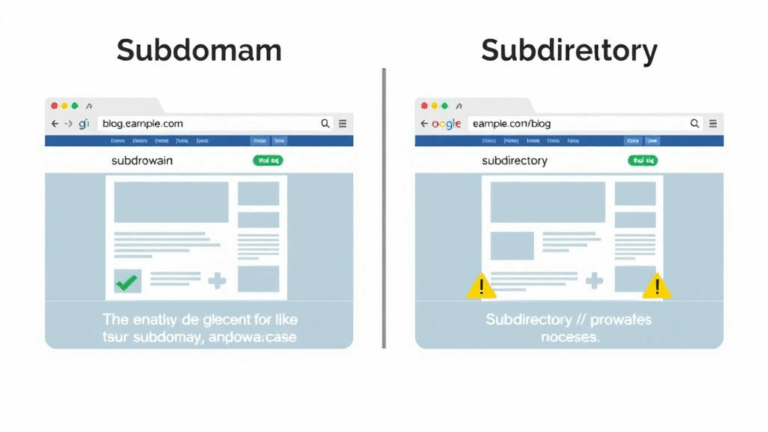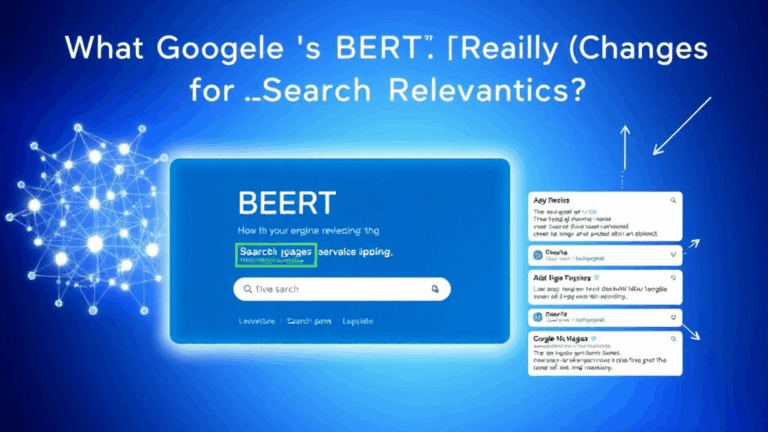Meta Tag Tweaks That Actually Moved My Search Rankings
What Googlebot Actually Reads vs What You Think It Does
There’s meta tags, and then there’s what ends up in the index. Those two don’t always line up. I once spent a full afternoon tweaking the meta description tag on a post that never climbed past page four — only to realize later it was getting replaced entirely in SERPs by a scraped paragraph halfway down the page. Why? Because Google decided my summary looked too sales-y and pulled content based on on-page data instead.
Remember: Google’s crawlers don’t always obey your vision. According to their own documentation (and quietly confirmed via some log output from my server reverse proxy cache), the crawler will prioritize meaningful structure, inline text entropy, and user behavior signals over your nice, neat metadata overrides.
If you’re setting description expecting it to be gospel, forget it — unless it matches both intent and matches what users click through to. I’ve seen the SERP snippet change after average time on page drops, suggesting the snippet adapts based on bounce.
So yes, add <meta name="description">, but make sure what you’re writing is not just SEO-speak — Google’s probably going to rewrite it anyway unless your content and snippet stay consistent with engagement.
Title Tag Positioning Weirdness in Blogger and Older Themes
If you’re running an ancient Blogger layout (or heaven help you, inherited one from someone who last touched code in 2012), double check how your <title> is getting constructed. Some themes mess up the post-title and site-name merging order, which matters more than you’d expect.
I found a client’s blog where the actual post titles were showing up after the site name on SERPs. Not a huge deal at first glance, but it was truncating all the useful part of longer titles once indexed. Turns out the template was hardcoding <title>Blog Name | Post Title</title> — and for long posts, mobile SERPs were slicing off everything but the blog name, which meant clicks were tanking.
This is just one case, but if you’re using Blogger, open the theme editor, find the header include logic and make sure it’s rendering titles like Post Title | Blog Name — not the other way around. Preferably even drop the blog name entirely on post pages if it’s not adding context. This change alone gave me a noticeable CTR bump the week after I fixed it.
How Canonical Tags Misfire with URL Parameters
There’s a lovely silent war between UTM parameters and canonical URLs. I ran into this disaster when A/B testing meta images via different campaign links — same blog post, slightly different image identifiers, and surprise: Google indexed both versions as separate URLs.
The kicker? I did have a canonical tag on the page. It looked fine:
<link rel="canonical" href="https://example.com/my-post" />But the issue wasn’t the tag — it was that I had a cache layer appending tracking params after page render. So crawlers were seeing a full rendered page with zero canonical declared — because it got stomped by Cloudflare’s edge caching view logic. Fun!
If you’re using CDNs, double-check that any layer sitting between you and the crawler isn’t discarding your meta tags or modifying DOM post-render. Googlebot renders JS nowadays, but it doesn’t take kindly to elements injected after the first few seconds of parse — especially metadata. I now add a dummy logging div inside the <head> to check what raw HTML is actually being served. Sounds stupid but it’s caught more template failures than I care to admit.
Open Graph vs Twitter Cards: Who Wins When Conflicting?
There’s no consensus on whether Facebook or Twitter wins when you double-tag — even the platforms don’t fully document precedence. But I’ve noticed some sneaky behavior.
In one post, I had:
<meta property="og:image" content="https://img.example.com/default.jpg">
<meta name="twitter:image" content="https://img.example.com/alt.jpg">The Facebook preview looked fine. Twitter, however, would sometimes pull nothing. Not even the alt image. After some digging in Twitter’s card validator and copy-pasting random headers into curl, I realized their crawler was hitting an expired 301 chain on the alt image CDN (thanks, poorly-configured CNAME!) — which caused the fallback to fail, but only sometimes. When both images resolved? Twitter took the Twitter one. When the Twitter one failed? It didn’t reach for og:image — it just bailed completely.
So, don’t assume any fallback logic exists between Open Graph and Twitter. Specify both, and make both robust. And maybe don’t host your share assets on an image CDN you haven’t pinged in six months.
When ‘robots’ Tags Don’t Override HTTP Headers
Come for the meta tags, stay for the 2005-era caching server behavior that won’t die. I had a site where meta tags were screaming index,follow, yet large swaths of the blog weren’t in Google’s index at all — not even showing up with site: searches.
Eventually I cracked open a Chrome DevTools Network tab in paranoid mode and saw this in the response headers:
X-Robots-Tag: noindex, nofollowTurns out our CDN (not naming names) was injecting that header in debug mode when response time exceeded a threshold. Why? Some mystical load-shedding logic from a bygone A/B test. But get this: Googlebot will respect HTTP-level robot directives over in-page meta tags. Meaning your gorgeous <meta name="robots" content="index,follow" /> is totally ignored if the response header contradicts it.
If you’re ever in a weird meta indexing battle, just curl the live headers. Sometimes the thing killing your rankings isn’t even in your CMS — it’s an ops-level config scrap no dev left a note about. The sheer number of production systems shipping phantom headers is… disturbing.
Blogger’s Meta Keywords Tag: Still There, Still Useless
I don’t even want to talk about the meta name="keywords" tag, but apparently Blogger’s auto-template still insists on generating it unless you turn it off. Spoiler: Google hasn’t used that tag in ranking since they sunset AltaVista-level logic.
Still, some older Blogger templates will create those tags based on the posts’ Labels, so if you’ve been keyword-stuffing the Label fields thinking it helps — it doesn’t. In fact, it can hurt structured data if those Labels render elsewhere and force weird associations (e.g., pages listing under unrelated topics).
You can disable it via custom XML editing in Blogger’s theme — just look for the block that says:
<b:if cond='data:post.labels'>and comment out the section wrapping meta name="keywords". You won’t lose anything legitimate. It might even clean up how social and search previews guess your context.
The Meta Refresh Tag’s Quiet War Against SEO
Okay, I admit it. I used to use <meta http-equiv="refresh" content="0; URL=..."> to redirect broken Blogger pages. Not proud. It worked — people got to the new content — but search engines? They hate it. Google calls this out as a soft redirect, and while it might get picked up eventually, you’re fragmented in search results the entire time.
One of my older project sites had 40+ posts using meta refresh to redirect to new URLs after a retroactive cleanup. Almost none of the link juice carried over. I only realized this after digging into the GSC index coverage report and seeing “Duplicate, submitted URL not selected as canonical” — for almost every one of those pages.
If you’re working within Blogger’s constraints, and can’t implement server-level 301s, literally your best bet is to add a message or header to the old post pointing people to the new content and let it age out naturally. Meta refresh does more harm than good here. It’s flashy, fast, and subtle — and totally untrusted by modern search engines.
Useful Tweaks That Actually Affected My Indexing
Everyone says to optimize meta tags, but a lot of tutorials just parrot rules from the early 2010s. Here are the only things I did to one of my higher-traffic Blogger blogs that actually moved the needle in GSC indexed URLs:
- Hard-coded the
<title>structure to prioritize post title first, then blog name, max 60 chars. - Stopped using meta refresh, started using inline textual redirects (“This post has moved to…”). Engagement stayed flat, indexation improved.
- Stripped all automatic
meta keywordsgeneration. GSC reports fewer duplicate titles since. - Added
noindexto category/tag listing pages. Lost about 20 low-quality indexed URLs, but CTR went up. - Ensured my Open Graph and Twitter metadata point to fast, valid URLs with correct dimensions (1200×630 minimum). Fixing a bad OG image can double FB preview clicks.
Yes, all of this feels like pushing sand uphill with a fork. But I got maybe 60-something percent of my pages consistently indexed after these changes — better than before, and way less GSC warnings.














